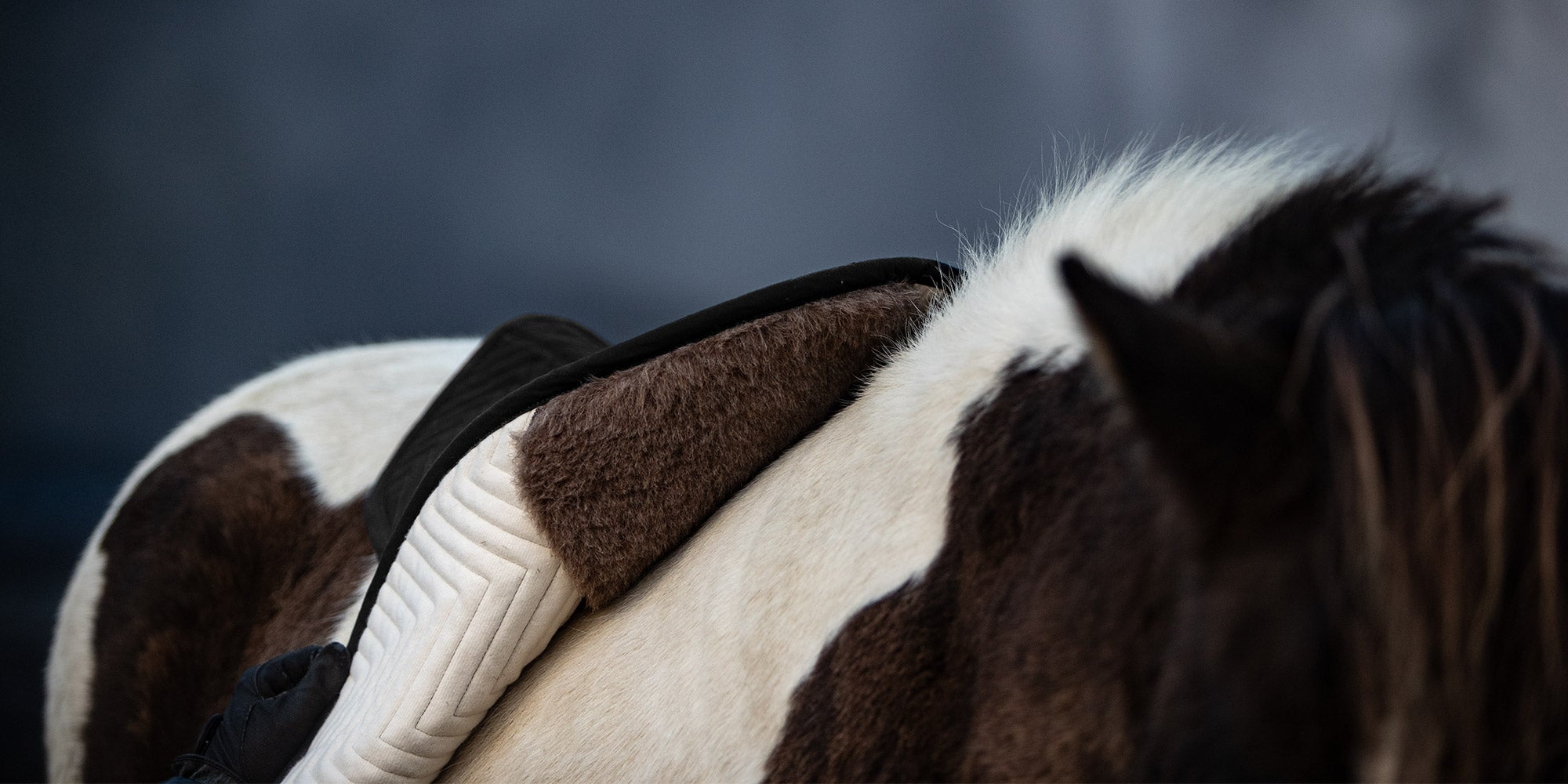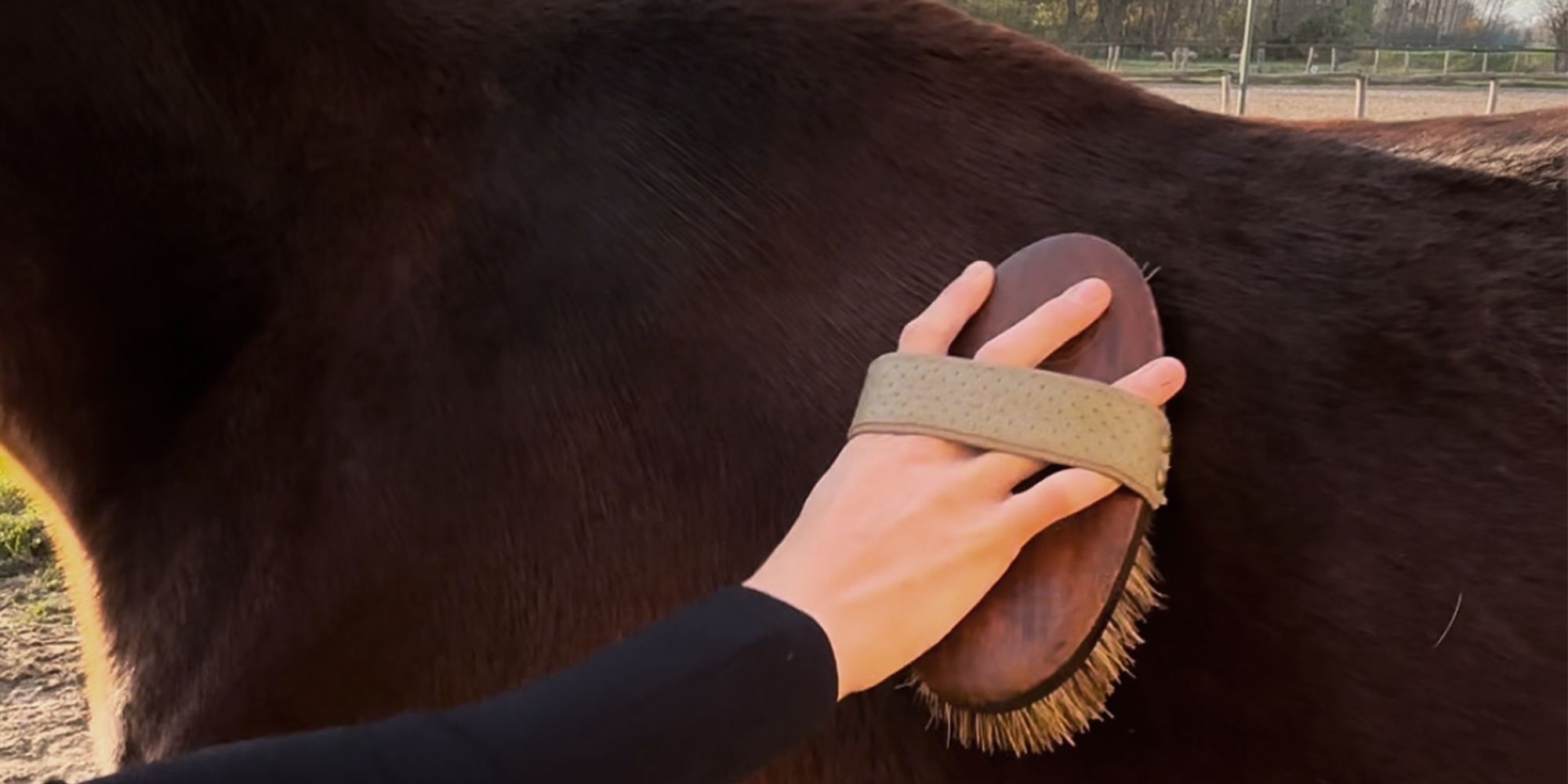Sebaceous glands in the saddle area of the horse
What are sebaceous glands?
Sebaceous glands are tiny, sac-like glands in the skin that produce a fatty substance called sebum. This sebum acts as a natural protective layer for skin and hair and prevents drying out. At the same time, it repels water and helps to ward off dirt and pathogens.
Why are sebaceous glands particularly present in the saddle area?
The saddle area, i.e. the area on the back that is covered by the saddle, is an important part of the horse's body. There are many sebaceous glands here because:
-
Hair growth and protective function : The back is covered with dense fur, which is kept supple and water-repellent by sebum.
-
Mechanical protection : Mechanical stress in this area puts greater strain on the skin. Sebum helps keep the skin flexible and prevents irritation caused by friction or pressure.
-
Thermoregulation : Sebum facilitates the release of sweat while keeping the skin protected, which is particularly important in this stressed area.
The original function of the sebaceous glands
The main function of the sebaceous glands is to keep the skin and coat supple and to protect them from:
-
Dehydration: Sebum forms a protective barrier against moisture loss.
-
Environmental influences: The grease film prevents the penetration of dirt and microorganisms.
-
Friction and pressure: Especially in the saddle area, sebum reduces the strain caused by mechanical influences.
What can affect the function of the sebaceous glands?
The normal function of the sebaceous glands can be disrupted by various factors:
1. Overproduction of sebum
Excessive sebum production can lead to the formation of clogged pores, which in turn causes inflammation or sebaceous nodules.
-
Causes: Hormonal imbalances, stress or genetic predisposition.
2. Mechanical stress
The pressure and friction caused by poorly fitting saddles or inferior saddle pads can irritate and block the sebaceous glands.
-
Consequences: This can lead to irritation, clogged sebaceous glands or skin inflammation.
3. Inadequate care
Failure to clean the saddle area can lead to the accumulation of dirt, dead skin cells and sweat, which clog the pores.
-
Solution: Regular care with mild cleansers helps keep the skin healthy.
4. Use of unsuitable care products
Products containing harsh chemicals, fragrances or dyes can irritate the skin and disrupt the function of the sebaceous glands.
-
Recommendation: Natural care products with aloe vera or chamomile are more skin-friendly.
5. Illnesses or infections
Bacterial infections or fungal attacks can damage the sebaceous glands and impair their function.
-
Signs: inflammation, swelling and tenderness.
-
Solution: If infections are suspected, a veterinarian should be consulted.
The sebaceous glands in the saddle area of the horse play a central role in the skin health and comfort of your horse. They protect the skin from drying out, friction and environmental stress. Mechanical influences, poor care or unsuitable saddle pads can impair their function and lead to problems such as blocked sebaceous glands or inflammation. With the right care and suitable equipment, you can help to keep the sebaceous glands healthy and offer your horse optimal comfort.



